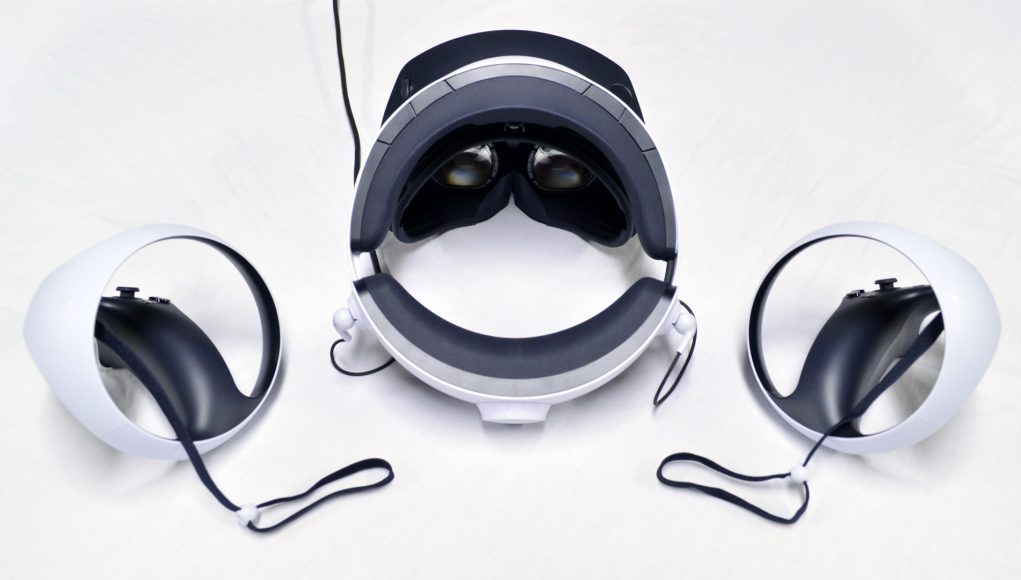Audio

One of my biggest gripes about PSVR 2 is the lack of directly integrated audio.
Even though the headset comes with custom earbuds which attach to the back of the headset and can even stow in little holes in the headband, having to deal with sticking them in your ears or sticking them back in their holes every time you put the headset on or take it off us just an annoying step that I wish I didn’t have to do.
Worse still… if you’re like me and become very immersed in what you’re playing, you’ll forget they’re even in your ears, which means that every time you take the headset off you’ll be greeted with the uncomfortable sensation of them being pulled out of your ears. This has happened to me on the vast majority of PSVR 2 play sessions so far.
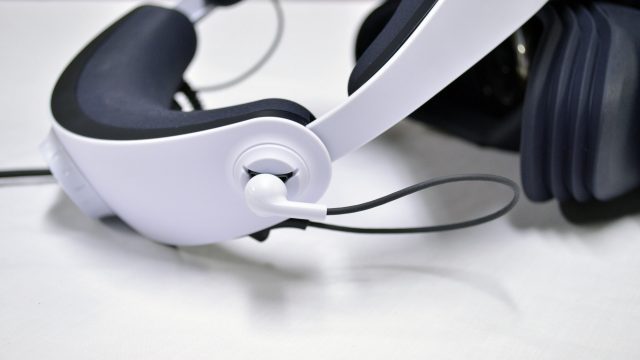
The saving grace is that at least the earbuds provide good audio quality and noise isolation on their own.
And while you technically can remove the earbuds and choose to use your own 3.5mm headphones or earbuds, this winds up being a sub-par solution because you’re still dealing with putting extra stuff on your head and removing it, and then you have bulky headphones don’t usually play nice with the headstrap, or at best you’ve got a different pair of earbuds but you’re now dealing with a long cable dangling over your shoulder while you play.
Hopefully we’ll see third-party audio solutions come to the rescue to offer an off-ear audio solution that requires no fiddling from the user.
Tracking & Controllers
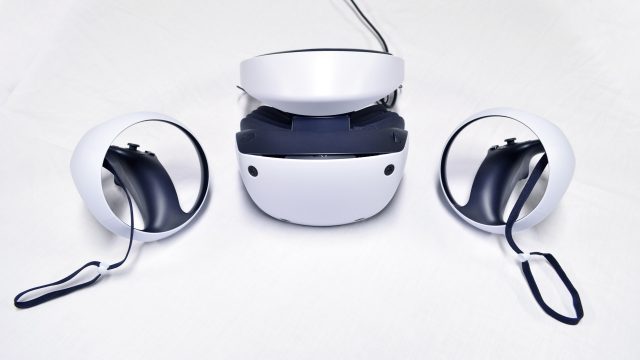
Sony’s jump to inside-out tracking on PSVR 2 has certainly been well executed.
The tracking quality isn’t just leaps and bounds ahead of what we saw with the original PSVR, but it’s right up there with the best inside-out tracking solutions on the market. In my time with the headset so far, across several different lighting conditions, I experienced essentially zero tracking errors from either the headset or the controllers.
When I stress-tested PSVR 2’s tolerance for low light (remember, the system needs to be able to see the world around you in order to track its position), I was pretty darn impressed with how long the tracking would hold on before finally complaining that it needed more light. Even when the passthrough view showed seemingly 90% noise from low-light, the headset and controllers continued to track fairly well.
I also found the headset to be quite tolerant of larger, bright, overhead lights, both in the tracking of the headset and the controllers.
Sony has also taken the time to include a thoughtful extra option for PSVR 2 called ‘Tracking Support’ which places a target on your TV that makes it easier for the headset to track in difficult situations. I haven’t actually found a situation where I needed this yet (and it’s turned off by default), but it could be helpful in some circumstances of unique room composition or lighting.
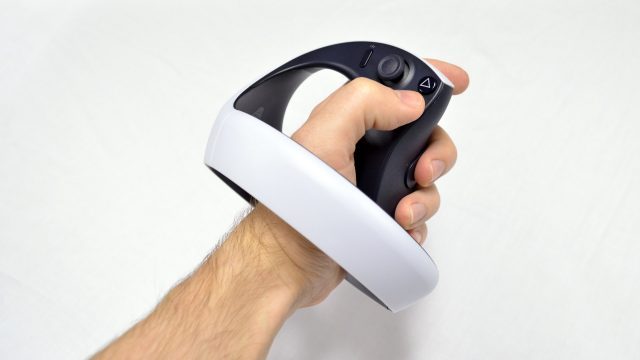
The shape of the PSVR 2 ‘Sense’ controllers certainly has a unique form to it, but it isn’t just for the sake of being different. Moving the tracking rings more toward the wrists means the controllers can get much closer together without bumping into each other compared to the placement we see of the rings on most other VR controllers. This has a minor (but welcomed) benefit of making close hand-to-hand interactions more immersive with little downside (except a slightly off-kilter balance).
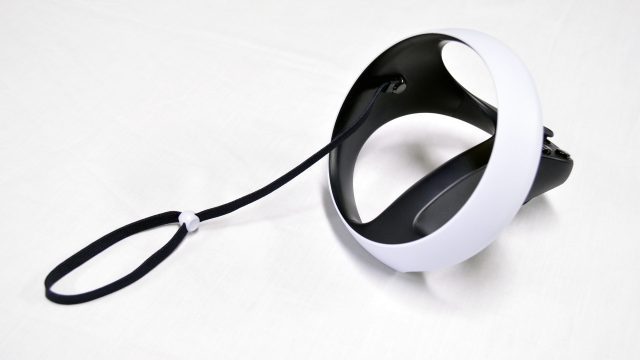
The controllers themselves feel solid in the hand, though might feel a little bit small to those with bigger hands. The buttons, sticks, and triggers all feel high quality, and though the grab button is in fact a button and not a trigger, so far I’ve found the force required to keep it continuously depressed hasn’t bothered me yet.
Similar to some of VR controllers, the sticks, buttons, and triggers of the PSVR 2 controllers are capacitive, which means the game can identify when you’re touching them and use that information to more accurately represent your hand in the game. It’s still fairly coarse sensing, and I haven’t seen it used too effectively just yet, but it can be a nice detail for developers who take the time to add that extra bit of polish.
Haptics
PSVR 2 brings new haptic capabilities to the market, offering more than we’ve seen even on the most premium VR headsets on the market.
In addition to the usual rumble in the controllers, the Sense controllers also have adaptive triggers which can vary their resistance of each trigger pull. While this works well, unfortunately I haven’t seen it used particularly well just yet. Unfortunately haptics tend to be low on the priority list when it comes to game polish, but I have a feeling that some game will end up making great use of the new trigger capability and I’m looking forward to seeing that in action.
And that’s not the only new haptic capability that PSVR 2 brings to the table. It’s also the first headset we’ve ever seen to come with rumble haptics on the head.
Compared to generally smaller motors in VR controllers, the rumble motor in the headset is clearly larger and provides a weightier rumble that still manages to feel smooth rather than rattly (if ‘rattly’ wasn’t a real word before, it is now). You’ll know what as mean as soon as you turn on the headset because it gives you a nice rumble to say ‘hello I’m ready’ each time you hit the power button.
So far I’ve seen head rumble on PSVR 2 used thoughtfully to emphasize only the most intense moments in some games, and it really does at a little extra intensity to what’s happening around you. As with most haptics, it’s a small but immersive touch.
I have a feeling that it could get annoying if overused, so hopefully developers will let it lay forgotten until they need to pull out all of the haptic stops for those big moments.
Fit & Ergonomics
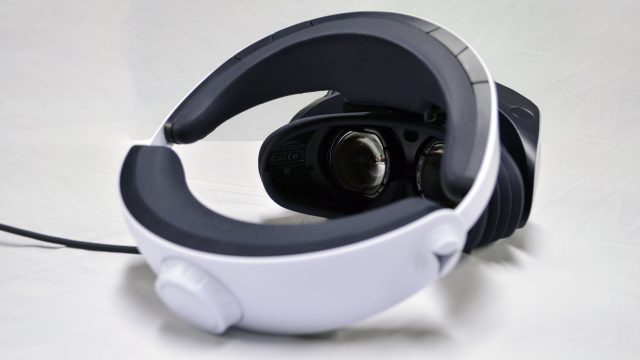
I’ve yet to meet a ‘halo-style’ headband on a VR headset that I really liked, and PSVR 2 is no exception. In my experience, the fit of halo-style headstraps is less flexible when it comes to the wide range of head shapes out there.
There’s only one specific way that the curve of the forehead pad will fit best on your forehead, but that’s different for everyone and in my case that perfect spot means my eyes are way outside the sweet spot of the lens. That means I need to move the forehead pad to a less ideal spot from a comfort standpoint in order to achieve reasonable visuals.
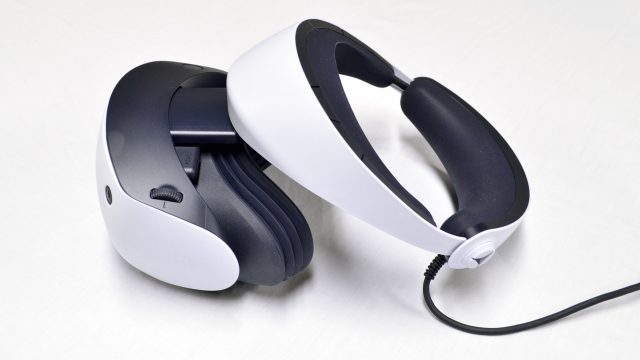
For me that’s meant that PSVR 2 consistently starts to be uncomfortable after about an hour of playtime. Compared other headsets, I also found it a little more difficult to tweak the headset’s position for temporary relief which might otherwise allow me to extend my sessions (very likely because of the small sweet spot).
As I’ve said before, if there was an up and down adjustment for the lenses, this wouldn’t be much of an issue, but understandably that’s difficult to achieve from a mechanic standpoint.
While it’s nice that PSVR 2 gains an IPD adjustment that its predecessor lacked, this was ultimately a necessity because of the headset’s small sweet spot.
It’s nice to see that PSVR 2 continues to have a generous eye-relief adjustment which allows the headset to fit a wider range of people (including making it easier to fit glasses) though, again, the small sweet spot of the lens means you’re going to give up some clarity and field-of-view if your eyes aren’t as close to the lens as possible.
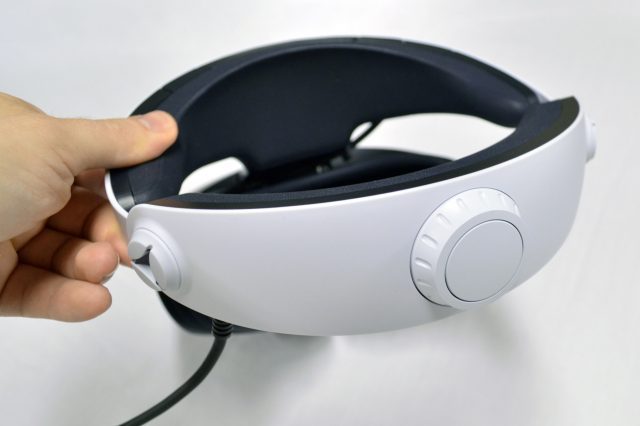
From a fit standpoint, PSVR 2 feels very similar to PSVR in the way that it sits and how you put it on. There’s a crank on the back to tighten the headstrap and a button to release the springy tension of the struts.
I find it a bit annoying that the struts are always locked in place (and automatically retract to minimum distance) if you aren’t actively holding the button and using two hands to pull the headset open to fit it over your head. Like some other headsets, I’d much rather be able to dial in the fit once, then have some spring to the struts to make it easy to pull the headset on without needing to use the button or the crank every single time. This also makes it really awkward to take the headset off without setting the controllers down first.

